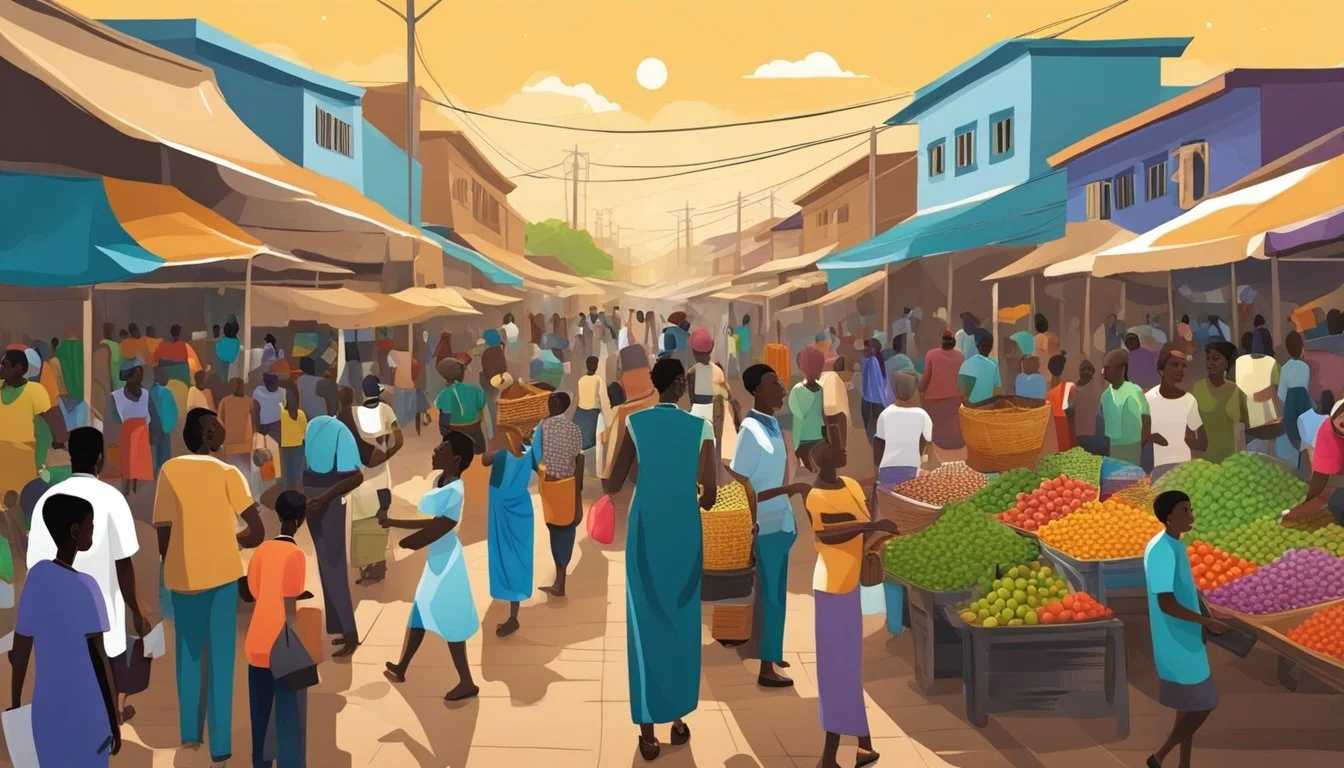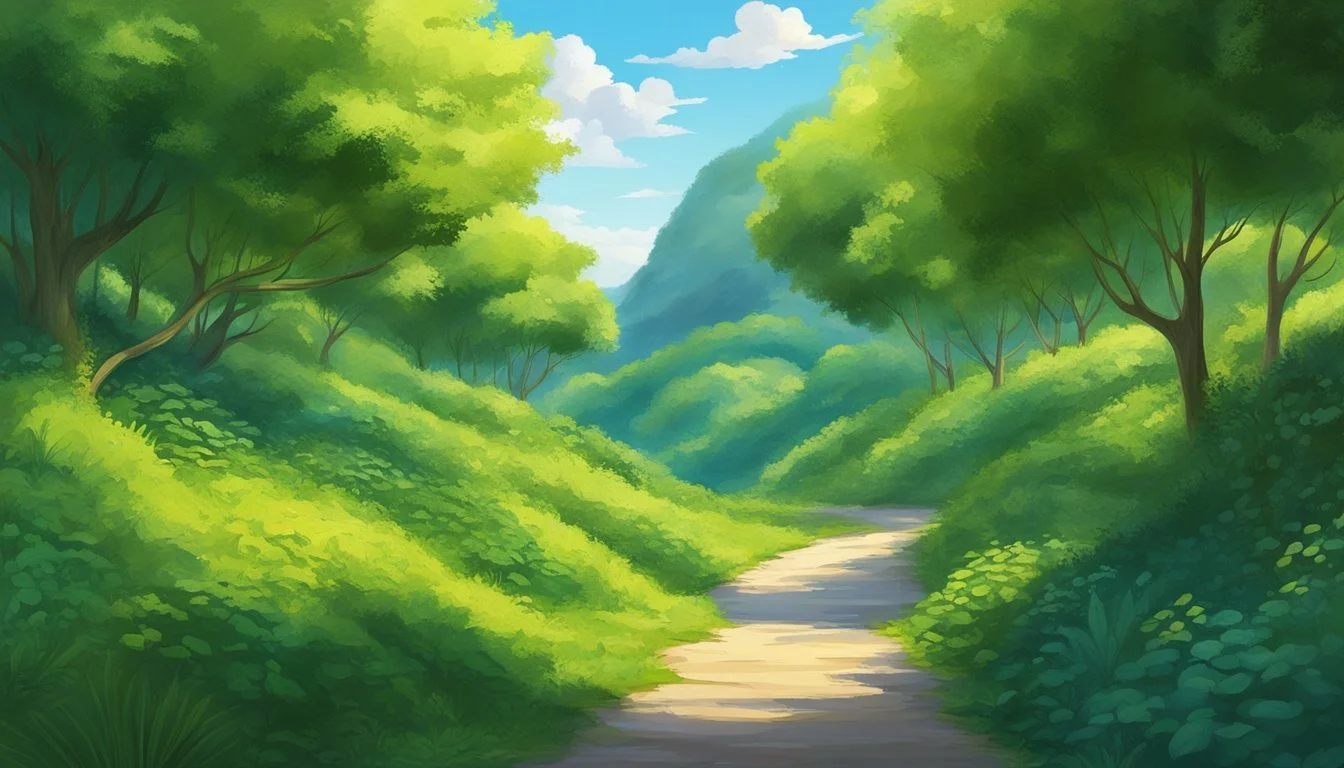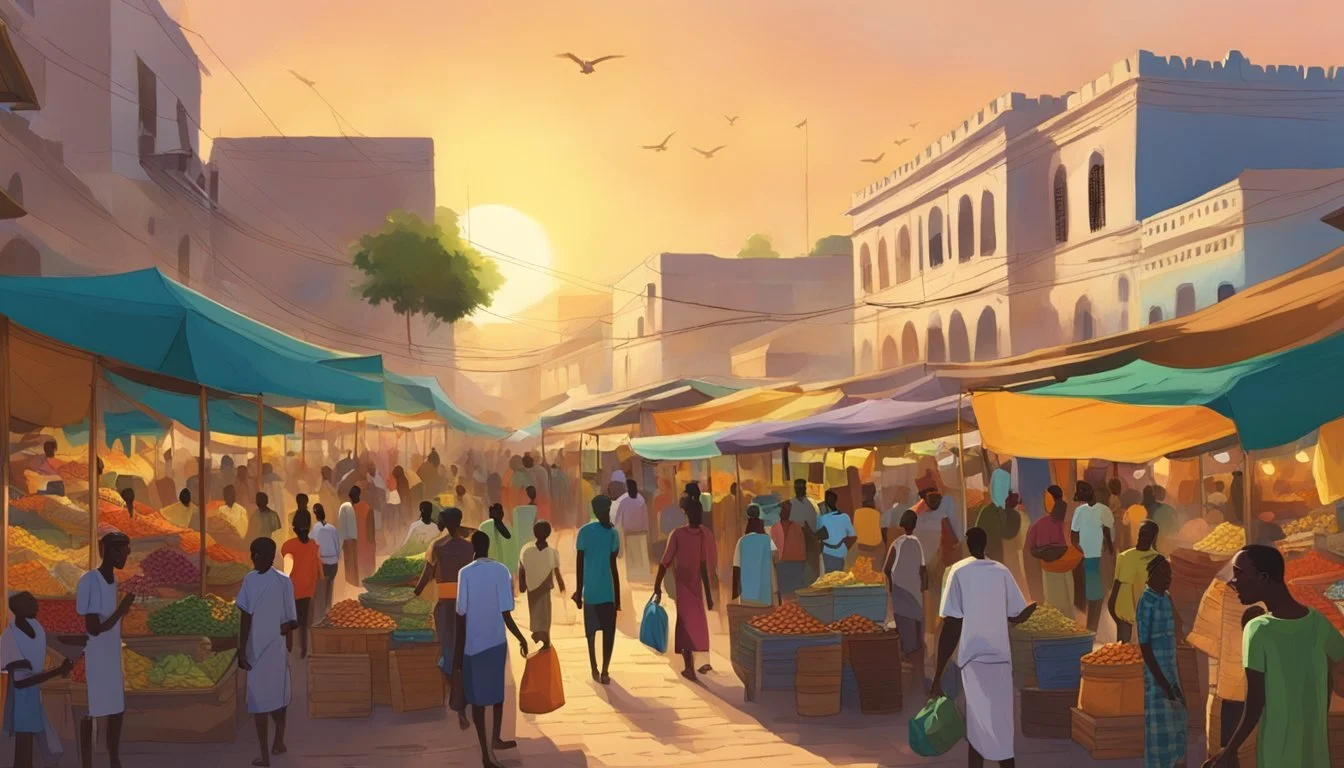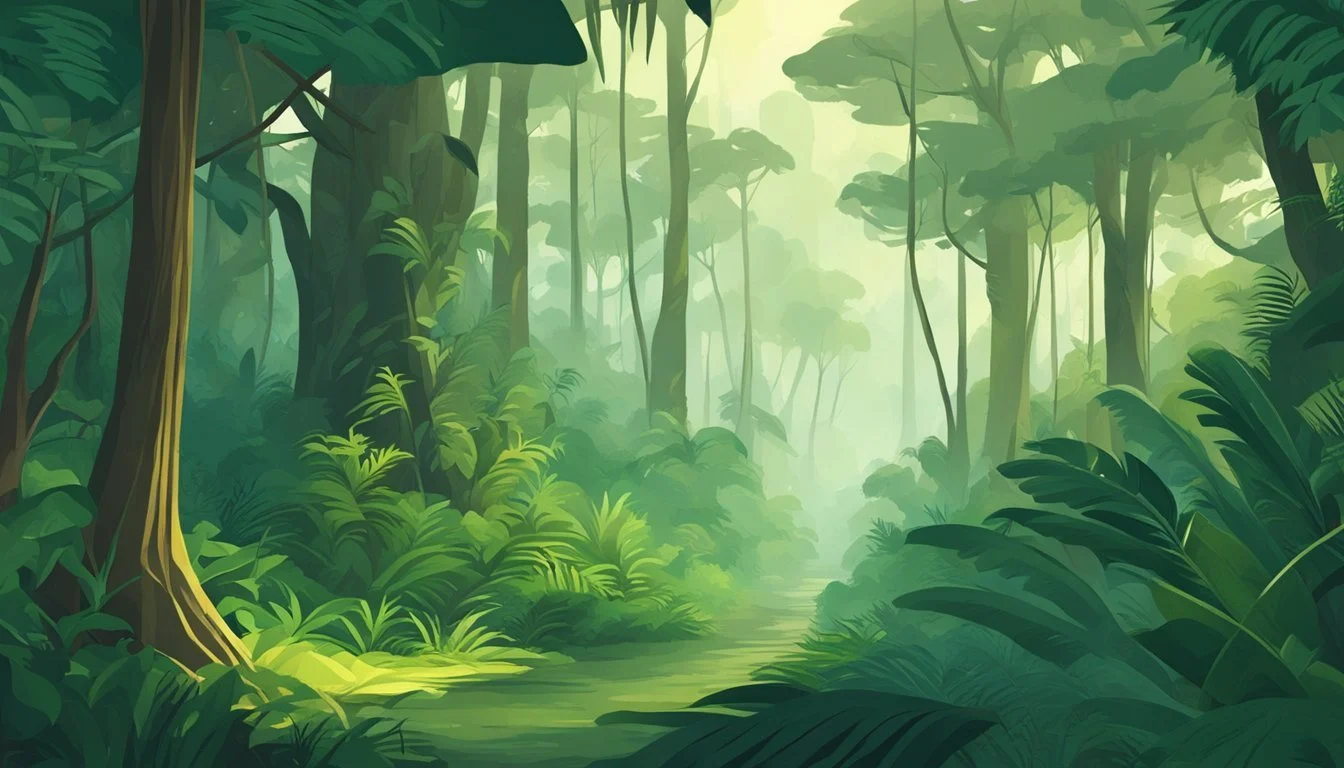6 Compelling Documentaries on Senegal
Unveiling West African Culture and History
Documentaries offer a unique window into the culture, history, and society of different countries. Senegal, a vibrant West African nation, has been the subject of several compelling films that showcase its diverse landscapes, rich traditions, and complex social issues.
These documentaries provide viewers with an intimate look at Senegalese life, from bustling urban centers to serene rural villages. They explore topics ranging from political movements and environmental challenges to artistic expressions and everyday experiences of the Senegalese people. Through powerful storytelling and captivating visuals, these films invite audiences to gain a deeper understanding of this fascinating country.
1) "Ghana's Electric Dreams" by Kuukua Eshun
"Ghana's Electric Dreams" is a thought-provoking documentary film directed by Kuukua Eshun. The film explores the complex history and impact of the Akosombo Dam in Ghana.
Eshun's work examines the promises and realities of this massive hydroelectric project. It delves into issues of energy justice and sustainability in the West African nation.
The documentary is structured into six distinct episodes. Each part focuses on a specific aspect of the dam's influence on Ghanaian society and development.
Through interviews and archival footage, the film presents diverse perspectives on the Akosombo Dam. It highlights both the benefits and challenges brought about by this ambitious infrastructure project.
"Ghana's Electric Dreams" offers viewers a nuanced look at the intersection of energy policy, economic development, and social change in Ghana. The film provides valuable insights into the country's journey towards modernization and electrification.
2) "African Apocalypse" by Rob Lemkin
"African Apocalypse" is a powerful documentary directed by Rob Lemkin. The film explores the colonial legacy in Niger, one of Africa's poorest nations.
British-Nigerian poet and activist Femi Nylander presents the documentary. He traces the path of French colonial soldier Captain Paul Voulet, whose actions in 1899 mirror those of Kurtz in Joseph Conrad's "Heart of Darkness."
The film showcases Nigerien communities and their experiences living with the aftermath of colonial destruction. It provides a harrowing look at the trauma inflicted by colonialism.
Lemkin's documentary received critical acclaim. It was an official selection at the 2020 BFI London Film Festival and the 2021 Docville International Documentary Film Festival.
"African Apocalypse" also garnered nominations for prestigious awards. It was nominated for Best Arts Documentary at the 2022 Royal Television Society Awards.
The film offers viewers a chance to examine the long-lasting impacts of colonialism in Africa. It combines historical investigation with contemporary testimonies to create a compelling narrative.
3) "The Great Green Wall" by Jared P. Scott
"The Great Green Wall" is a visually striking documentary that explores an ambitious environmental project in Africa. Directed by Jared P. Scott, the film showcases efforts to create a massive green barrier across the continent.
The documentary follows the development of an 8,000-kilometer-long stretch of trees and plants. This initiative aims to combat desertification and mitigate the effects of climate change in the Sahel region.
Scott's film takes viewers on a journey through multiple African nations. It highlights the challenges faced by local communities and the potential impact of this large-scale reforestation effort.
The documentary captures the scope of the project, which spans from the Atlantic Ocean to the Red Sea. It illustrates how the Great Green Wall could restore degraded land, improve food security, and create jobs in rural areas.
"The Great Green Wall" presents a hopeful vision for addressing environmental issues. The film showcases the determination of those working to bring this ambitious plan to fruition.
4) "Finding Freetown" by Alfeo Dixon
"Finding Freetown" offers a captivating exploration of Senegal's history and cultural connections to Sierra Leone. Director Alfeo Dixon traces the journey of former slaves who returned to Africa and founded Freetown, Sierra Leone's capital.
The documentary highlights the shared heritage between Senegal and Sierra Leone, examining the complex relationships forged through the transatlantic slave trade. Dixon interviews historians, community leaders, and descendants of the original Freetown settlers.
Through stunning visuals and personal narratives, the film brings to life the experiences of those who made the arduous journey from slavery to freedom. It showcases the vibrant cultures that emerged from this historical migration.
"Finding Freetown" also delves into the lasting impact of these connections on modern-day Senegal and Sierra Leone. The documentary explores how cultural exchanges continue to shape both nations' identities and social structures.
Dixon's work provides a thought-provoking look at the resilience of African communities in the face of historical challenges. It serves as a powerful reminder of the enduring links between different regions of West Africa.
5) "Through Our Eyes" by Bintou Diarra
"Through Our Eyes" is a poignant documentary directed by Senegalese filmmaker Bintou Diarra. The film offers an intimate look at daily life in Senegal through the perspectives of local children.
Diarra's innovative approach involves giving cameras to young Senegalese and allowing them to capture their world. This technique provides viewers with an authentic, unfiltered glimpse into Senegalese culture and society.
The documentary explores various aspects of life in Senegal, including education, family dynamics, and traditional customs. It showcases both the challenges faced by Senegalese youth and their resilience in overcoming obstacles.
Diarra's film stands out for its raw honesty and emotional depth. By focusing on children's viewpoints, it reveals insights that might be overlooked in more conventional documentaries about Senegal.
"Through Our Eyes" has garnered critical acclaim for its unique storytelling approach and powerful portrayal of Senegalese life. It serves as a valuable educational tool, promoting cross-cultural understanding and empathy.
6) "Rumble in the Jungle" by Grace Ogot
"Rumble in the Jungle" is a documentary that explores Senegal's vibrant wrestling culture. Grace Ogot's film captures the intensity and spectacle of traditional Senegalese wrestling, known as laamb.
The documentary showcases the rigorous training routines of wrestlers as they prepare for high-stakes matches. Ogot's camera follows aspiring champions through their daily lives, revealing the dedication required to succeed in this demanding sport.
Laamb's deep cultural roots are examined, highlighting its significance in Senegalese society. The film depicts pre-match rituals, including spiritual preparations and the application of protective amulets.
Ogot presents insights into the economic impact of wrestling in Senegal. Top wrestlers achieve celebrity status and can earn substantial purses, making laamb a potential path out of poverty for many young men.
The documentary also explores the role of women in this male-dominated sport. It features female wrestlers who are challenging traditional gender norms and carving out their own space in the arena.
"Rumble in the Jungle" offers a compelling look at a unique aspect of Senegalese culture. It presents laamb as more than just a sport, but as a reflection of the country's values, traditions, and aspirations.
Cultural Context of Senegal
Senegal's rich cultural tapestry is woven from its complex history and vibrant artistic traditions. The country's unique identity emerges from a blend of indigenous customs, colonial influences, and modern developments.
Historical Background
Senegal's history spans ancient empires, European colonization, and independence. The Mali and Jolof empires shaped early Senegalese society. French colonial rule began in the 17th century, lasting until 1960. Independence brought political changes under leaders like Léopold Sédar Senghor.
Senegal's strategic location facilitated trade and cultural exchange. The island of Gorée became a hub for the Atlantic slave trade. This dark period left lasting impacts on Senegalese society and diaspora communities.
Today, Senegal is known for its stable democracy and peaceful transitions of power. The country balances traditional values with modernization, creating a unique cultural landscape.
Music and Art in Senegal
Senegalese music draws from diverse influences, creating distinctive styles. Mbalax, a popular genre, fuses traditional drumming with modern instruments. Artists like Youssou N'Dour have brought Senegalese music to global audiences.
Visual arts in Senegal encompass traditional crafts and contemporary works. Colorful textiles, intricate jewelry, and wooden sculptures reflect age-old techniques. Modern Senegalese artists often blend African motifs with global art trends.
Film has become an important medium for cultural expression. Directors like Ousmane Sembène pioneered African cinema, addressing social issues through their work. Senegalese films continue to gain international recognition at festivals worldwide.
Cinematic Techniques in Senegalese Documentaries
Senegalese documentaries employ distinctive storytelling approaches and visual aesthetics to capture the nation's culture and experiences. These techniques blend traditional African storytelling with modern filmmaking methods.
Storytelling Approaches
Senegalese documentarians often use non-linear narratives to weave together personal stories and historical events. They frequently incorporate oral traditions, employing voice-over narration by community elders or griots. This technique adds depth and cultural context to the visuals.
Many films blend fiction and reality, creating docufiction hybrids that blur the lines between genres. This approach allows filmmakers to explore complex social issues through a mix of real-life footage and dramatized scenes.
Participatory techniques are common, with subjects often directly addressing the camera or engaging in dialogue with the filmmaker. This creates a sense of intimacy and authenticity, drawing viewers into the Senegalese experience.
Visual Style and Aesthetics
Senegalese documentaries often feature rich, vibrant color palettes that reflect the country's visual culture. Filmmakers use natural light to capture the warm tones of Senegal's landscapes and urban environments.
Handheld camera work is prevalent, creating a sense of immediacy and allowing for spontaneous moments. This technique is particularly effective in capturing street scenes and daily life.
Many documentaries incorporate traditional Senegalese art forms, such as textiles and sculptures, as visual motifs. These elements are often used to frame shots or transition between scenes, adding cultural depth to the visual narrative.
Slow-paced editing is common, allowing viewers to absorb the nuances of Senegalese life. Long takes of everyday activities or landscapes create a meditative quality, inviting reflection on the subject matter.







